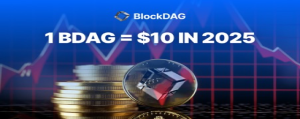After total collapse, Zimbabwe’s business leaders look at FX peg for fair trading value
Zimbabwe’s economic catastrophe could begin to work as an advantage for FX traders if the Zimbabwean pro-business lobby gets its way. We look at how this can be navigated by FX brokers

Africa is by and large a totally untouched haven of massive resources, raw materials, commodities and valuable minerals, as well as an expanse of opportunity for financial markets and electronic trading firms.
For those who have managed to forge an entry into the African retail FX business through perseverance and understanding of the local methods of conducting business, many obstacles have paved the way to an eager and untapped customer base.
Zimbabwe is a case in point, however the tide is turning.
Taken at face value, entering the sub-saharan African retail FX business is not for the feint-hearted, however given the massive levels of sophistication and technological structure that major cities such as Johannesburg offer, other nations on the doorstep of highly developed markets that are currently hosted from within South Africa are potentially the next expansion area.
Whilst all of the major FX firms are well and truly ensconced in the South African commercial center, crossing borders has been impeded by massive inflation, difficult economic situations and lack of infrastructure, however Zimbabwe, one of the most tragic examples of a failure of national economics, is beginning to look more like a ground for opportunity.
Today, the Confederation of Zimbabwe Industries, the country’s biggest industry representative group, is lobbying the Reserve Bank of Zimbabwe to consider partially floating the exchange rate in order to minimise distortions arising from the present currency peg, but critics have said this would worsen an already precarious situation.
CZI president Mr Sifelani Jabangwe told The Sunday Mail Business last week that the partial liberalisation of the exchange rate would allow businesses generating foreign currency to realise “fair value” for money.
Government maintains that bond note and RTGS values are at par with the US dollar. But Mr Jabangwe said while Government’s decision to separate the Foreign Currency Accounts/Nostro and FCA/RTGS holding accounts was welcome, companies that generate foreign currency are reluctant to trade their dollars at a rate of 1:1. “It’s a stalemate,” Mr Jabangwe said.
“Forex generators are sitting on their money; they can’t trade because there is no fair value at a rate of 1:1. We have proposed a trading mechanism to the authorities for a partial free-floating system. It does not necessarily have to be a full float. We are still waiting for the response which would have to come from the Reserve Bank of Zimbabwe” he said.
While the official exchange rate between the US dollar and the bond note or RTGS has remained at par, analysts say the separation of the FCA/Nostro and FCA/RTGS accounts was an admission by the monetary authorities that the RTGS balances were not equal in value to the dollar.
Following the announcement on the separation of the accounts by the central bank, the rates went up by as much as 500 percent on the black market, but have since settled at around 350 percent. As such, some economists argue that any effort to liberalise RTGS and US dollar accounts or rates will be tragic as account holders will move all their excess RTGS balances into the market, which will result in a skyrocketing exchange rate and an inflation spiral.
Whilst of course it is a given that approaching the market in Zimbabwe should perhaps be done with trepidation, this lobbying effort is good news, especially in a nation with massive reserves of tradable commodities such as lithium which, in the advent of electric cars and solar energy, is likely to be in greater demand for the production of battery cells as time goes on hence multi-asset retail platforms could look toward encompassing any FX changes as well as the commodities of the future.
If crude oil has been the commodity of the post-war period, lithium is the commodity of the era of Elon Musk, himself a South African entrepreneur and pioneer of bttery technology.
For those keeping abreast of these developments, it is worth looking back to June 2015 when the Reserve Bank of Zimbabwe took the last step in the process of relinquishing the country’s troubled sovereign currency. Zimbabwe dollars will be decommissioned at a rate of 35 quadrillion per US dollar (that’s Z$35,000,000,000,000,000 for US$1).
Withdrawing all Zimbabwe dollar banknotes from circulation officially brought an end to the era of people carrying cash around in large bags and even wheelbarrows to do their everyday shopping. In 2009, the end of the decade long recession saw the government adopt the US dollar as its main currency. Since then people have effectively used US dollars or South African rand in everyday life, while an increasingly small number of Zimbabwe dollars, with virtually no value, remained in circulation.
Zimbabwe adopted the Rhodesian dollar in 1970, following decimalization and the replacement of the pound sterling as the currency. At the time of independence in 1980, the Rhodesian dollar was replaced by the Zimbabwe dollar, which was then worth US$1.50. Since then, rampant inflation, corruption, unresolved infrastructure bottle necks, President Robert Mugabe’s controversial land reform program and general economic mismanagement have led to the collapse of the economy and a severely devalued currency, with many organizations using the US dollar instead.
The 20th century saw several other examples of hyperinflation making banknotes worthless — notably Germany in the 1920s, Brazil in the 1980s, Argentina and Angola in the 1990s. In Zimbabwe the highest monthly inflation reached 79,600,000,000% in November 2008, with prices doubling every 25 hours. This was just short of Hungary’s record, where the highest ever monthly inflation reached 41,900,000,000,000,000% in July 1946 (and the highest denomination bill was 100,000,000,000,000,000,000 or one hundred quintillion pengo).
Once stability returned, most countries redenominated prices by introducing a new currency: Germany introduced the reichsmark in 1924, Brazil the real in 1994, Mexico the nuevo peso in 1993 (and back to peso in 1996). In these cases demonetization was effectively a process of redenomination — where the value of banknotes are changed, partly out of accounting convenience and partly to signal the arrival of a new era of more stable economy.
Speaking last month to several Zimbabwean immigrants to South Africa, many of whom now reside in Diepsloot, a township on the northern side of Johannesburg, FinanceFeeds asked the opinion of many whose small businesses rely on cash transactions about their route to financial freedom having left Zimbabwe purely for economic reasons.
The unanimous response was that many would like to have their own independent method of generating an income, and most are relatively optimistic on the basis that the currency situation in Zimbabwe, as one Diepsloot resident told me “Cannot get any worse”.
Volatility therefore may well come as reforms surface, creating a potential new market for retail firms in a region where government has failed its people but the value of precious resources and new opportunities for cross-border trading may well be worth a look.









